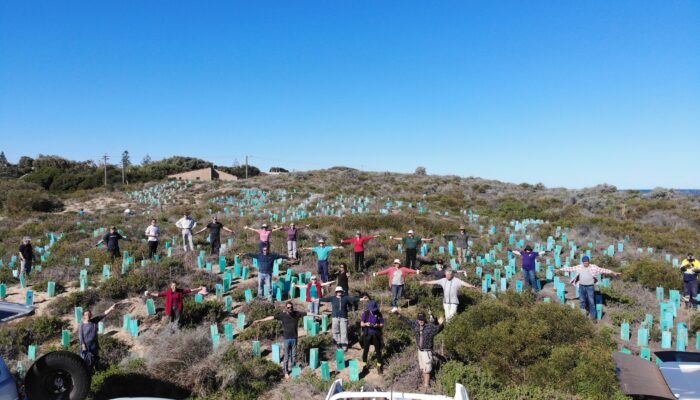WAME – Carnaby’s Cockatoo
Funding – WA Minster for the Environment
Project Activity
In 2001 the Moore Catchment Council was awarded a community grant from the Western Australian Minister for the Environment to examine the value of volunteer efforts at rehabilitation work aimed at improving the conservation status of the bird.
Over the next nine months, Professor Stephen Davies and Danika Loomes consulted with community groups with the following results:
- Identified most of the groups contributing voluntary effort to improve the conservation status of the bird.
- Established contact with statutory and private stakeholders.
- Examined the planting techniques used by volunteers.
- Measured the natural spacing of mature trees of species significant to the cockatoo.
- Outlined future work in relation to the size and distribution of plantings of potential foods plants, the possibility of creating artificial nest sites and the design of end-product promotional material.
- Examined the survival of plantings made to benefit Carnaby’s Cockatoo.
- Identified the design of a simple, successful artificial nest box for the bird.
- Shown that breeding males will travel at least 12 kms to a feeding site connected by a corridor to a breeding area and at least 6 kms to a feeding site separated by open fields from a breeding area.
Various recommendations were also made, some of which include:
- Corridors should be planted to connect breeding sites with feeding sites. Uncleared salt creeks are adequate corridors. Nesting birds will travel at least 12 kms each day along such corridors to feed.
- The birds will use artificial nest sites. These should be erected in areas where there is ample food but few nest sites, for example in young plantations.
- Large gum trees should be widely spaced when planted, with seedlings 15-20m apart, to ensure rapid, vigorous growth.
- Small headlands at the corners of paddocks, omitted from cropping but able to support three or four large gums should be targeted for the planting of future nesting trees.
- Large gums should be planted within remnants but at their edges.
- When volunteers come into the field to plant several experienced planters should accompany them and the layout of the planting should be clear before planting starts.
As a result of this project, a separate grant has been applied for to trial artificial nests and monitoring continues of bird numbers through banding chicks as well as colouring chicks’ tails. If you would like more information on Carnaby’s Cockatoo, please request a copy of the final report or contact Birds Australia.



